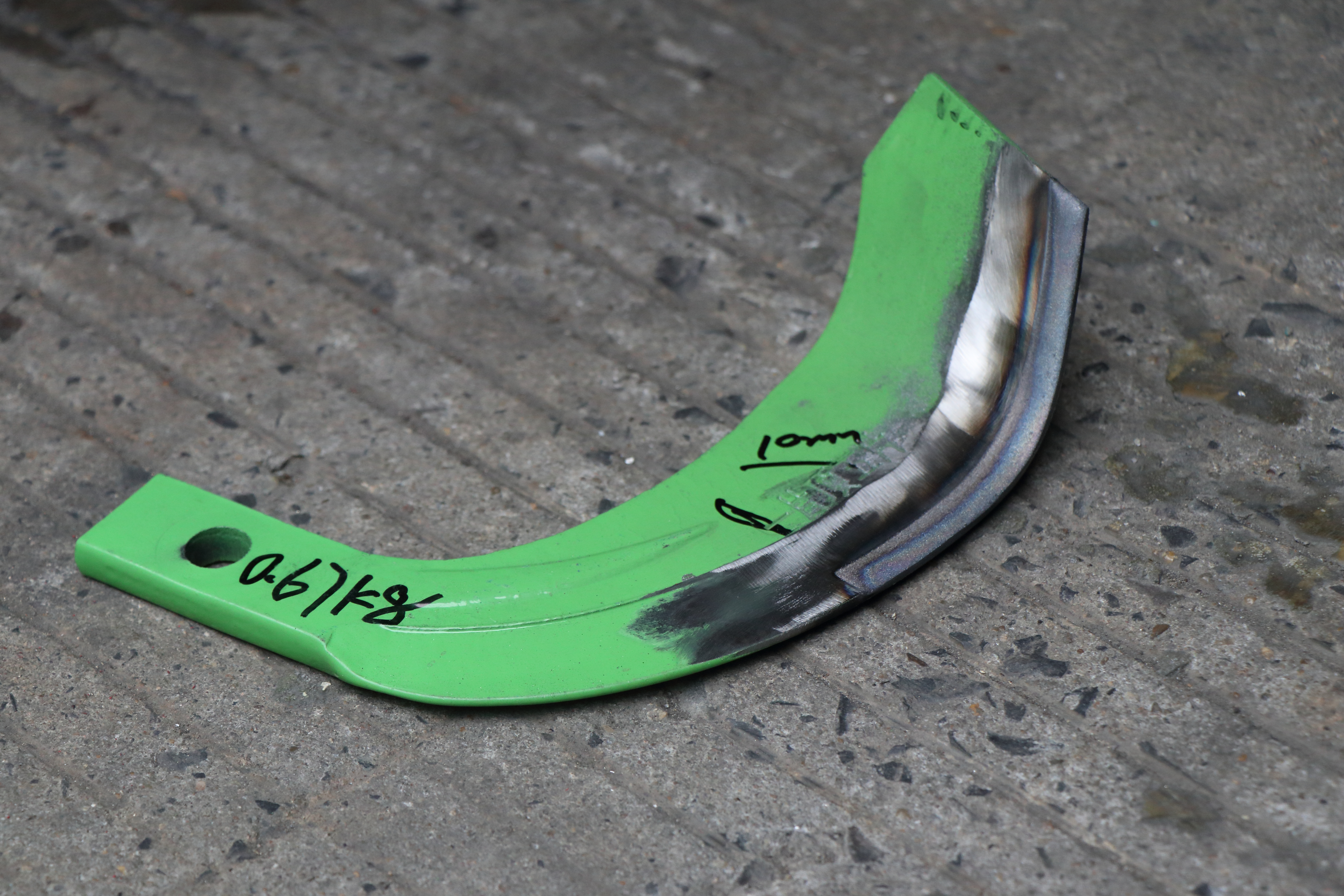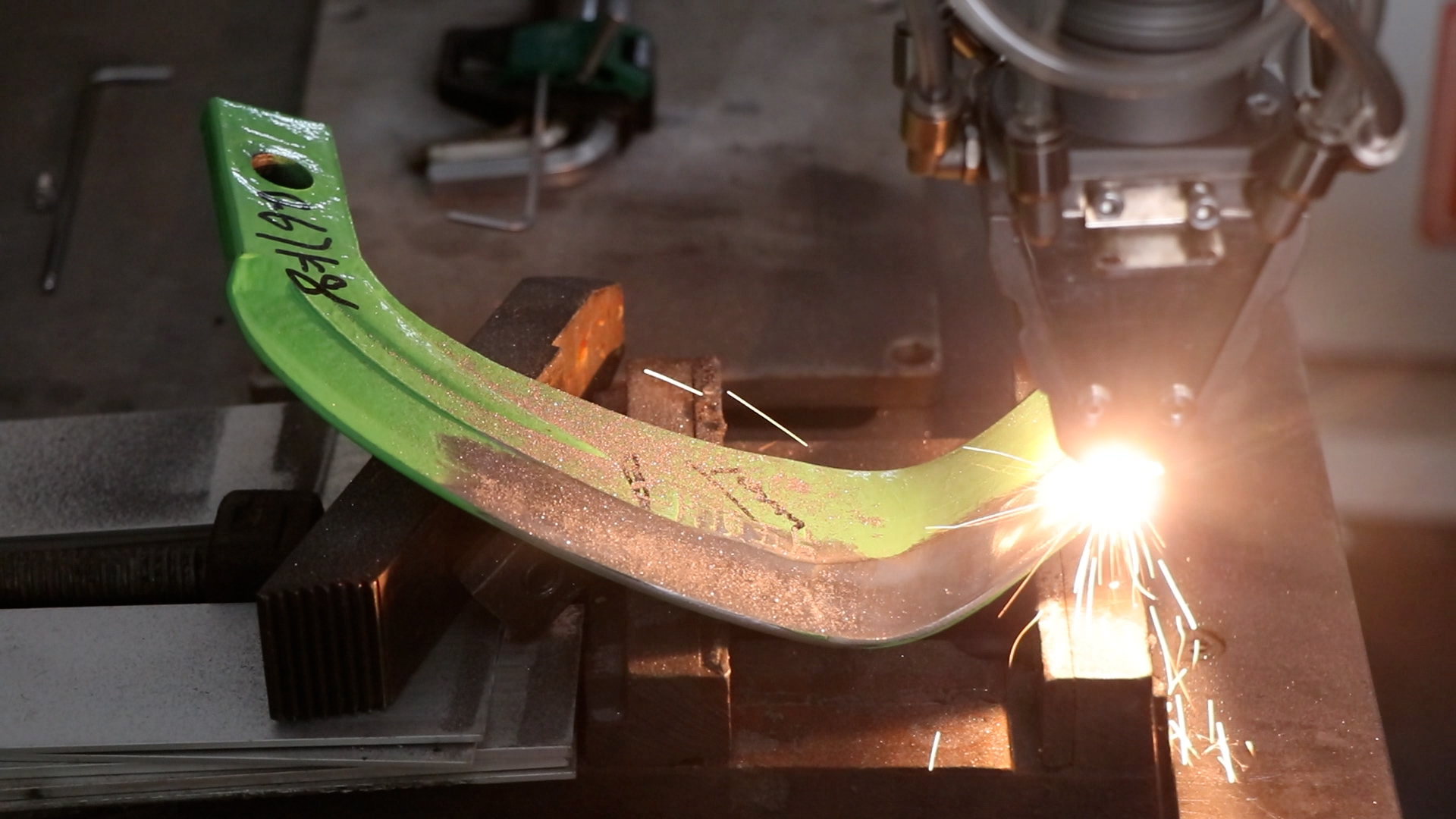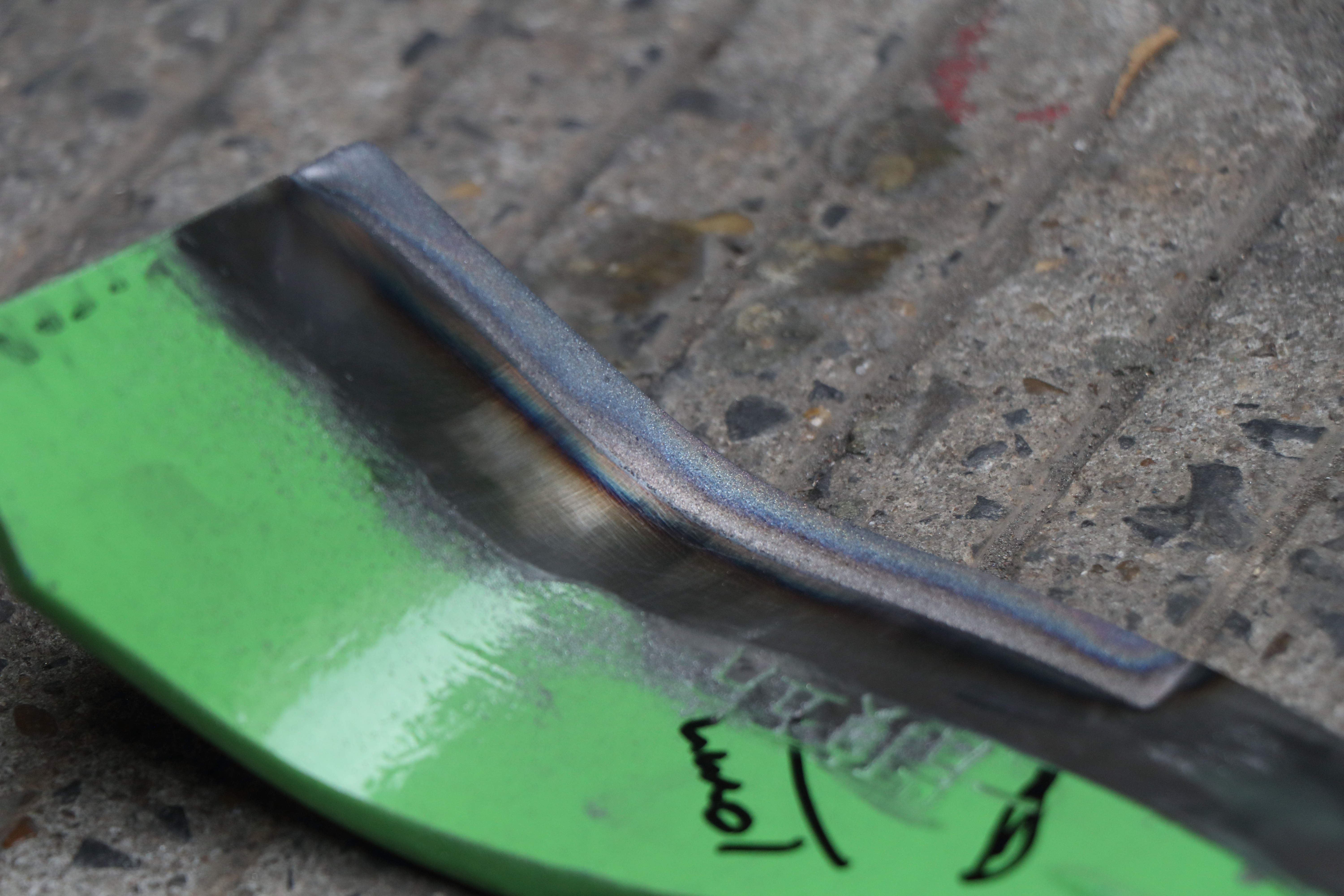Laser clad rotary plow blade is a kind of agricultural tool which forms a high-performance alloy layer on the surface of the blade through laser cladding technology, designed for high-intensity and long-time field work. By cladding the wear-resistant alloy layer on the wear-prone areas of the rotary plow blade, the wear resistance, corrosion resistance and service life of the rotary plow blade are significantly improved.

Working condition characteristics of rotary plow blade
Rotary plow blade in the working environment of high frequency contact with hard soil, gravel, easy to wear. Wet, acidic and alkaline environment, easy to corrode. Under high speed rotation, it is subjected to impact loads. Therefore, the surface needs to have high hardness, wear resistance and certain toughness and crack resistance.
Principle of laser cladding technology
Laser cladding is a high-energy beam surface modification technology that rapidly melts metal alloy powder onto the surface of a substrate through a laser beam and forms a metallurgically bonded coating.

Advantages include:
• High energy density, localized treatment;
• Metallurgical bonding of coatings to the substrate;
• Gradient, multilayer composite structures can be realized;
• Not easy to deform, suitable for the strengthening of precision parts.
Cladding Material Selection
Commonly used powder materials include:
- Ni-based alloys (e.g. Ni60): good metallurgical bonding and wear resistance
- WC reinforced alloy powders: high hardness and improved wear resistance
- Fe-based alloy powder: lower cost, high cost performance.
Cladding areas
Depending on the wear pattern, fusing is usually applied to the leading edge of the rotary plow blade (the most wear-prone area), the tip of the blade and its upper and lower areas, and locally reinforced critical stress zones.

Process Parameters
Key process parameters include:
- Laser power: typically 1~3 kW
- Scanning speed: 3~10 mm/s
- Thickness of the cladding layer: 0.5 ~ 2 mm
- Preheating and cooling control to minimize cracking.
Advantages of laser cladding
The hardness of ordinary rotary plow blade is 30~40HRC, after laser cladding, the hardness of rotary plow blade can be up to 55~65HRC. It is metallurgically bonded with the substrate, and the bonding strength is high. Wear life is 3~5 times longer than ordinary rotary plow blade. Corrosion resistance is significantly improved, adapting to wetlands, saline and alkaline land and other harsh environments.
Comparing the ordinary 45 steel blade and the laser coated Ni60 blade, the wear depth of the coated blade is only 35% of the ordinary blade after 200 hours of operation. The development of a gradient cladding structure (toughness of the inner layer and high hardness of the outer layer) further optimizes the balance between crack resistance and wear resistance.
Applicable scenes
- Paddy fields, mud, hard soil
- Stony and sandy areas
- High-intensity rotary tillage
Laser cladding rotary plow blade is a performance upgrade product of traditional agricultural machinery knives, suitable for agricultural users and manufacturers of agricultural machinery in pursuit of high efficiency and low maintenance, and has a broad application prospect in the process of modern agricultural equipment renewal and upgrading. Interested in laser cladding equipment? Click to learn more.
Post time: May-15-2025